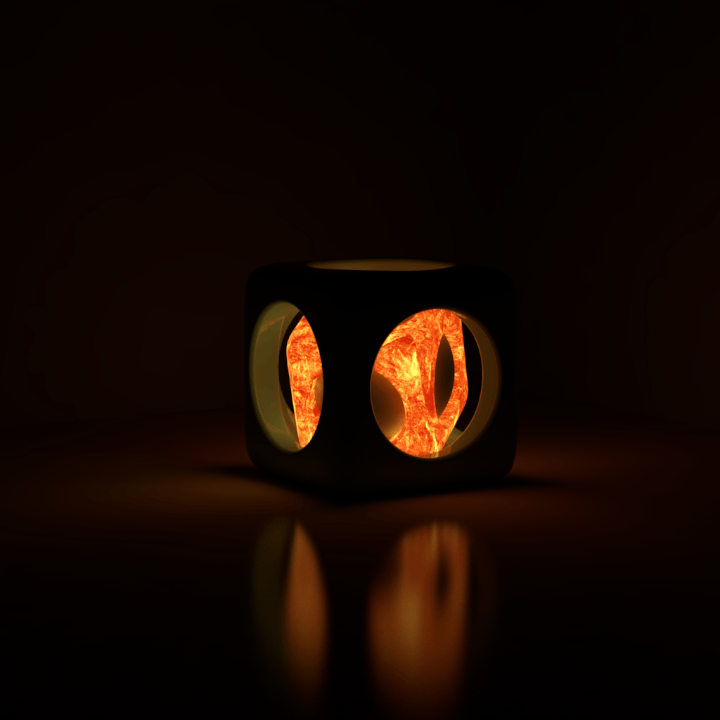This page provides information on the BRDFLight material node.
Overview
Parameters
Light Color – Controls the color of the light material.
Color Multiplier – A multiplier for the Light Color. For more information, see the Default Color and Multiplier Values example and the Textures example below.
Transparency – A texture to use as transparency for the material. Note that making the material more transparent does not affect the intensity of the self-illumination color. This is so that you can create perfectly transparent materials that still emit light.
Double-Sided – When enabled, the material is double-sided.
Emit On Back Side – When enabled, makes the object emit light from its back side as well. If this is off, the material is rendered as black on the back sides. For more information, see the Emit On Back Side example below.
Compensate Exposure – (used when rendering with the V-Ray Physical Camera) When enabled, the intensity of the material is adjusted to compensate for the camera exposure.
Multiply By Opacity – When enabled, the color of the light material is multiplied by the Transparency texture. Otherwise, the color and transparency act independently (so-called additive transparency).
Direct Illumination – When checked, all objects that have the particular V-Ray Light material applied to them, are considered mesh lights and emit direct light.
Example: Default Color and Multiplier Values
For the examples below, the interior cube is the default BRDFLight material. The exterior cube and ground plane have the default V-Ray Material with Reflection. The rest of the scene is shaded with a basic diffuse V-Ray Material.
This scene is rendered without any direct light sources.
Color Multiplier: 1.0
Compensate Exposure: off
GI: off
The image is dark except the inner cube (self-illuminated) and faint reflection on the ground. Notice there is no GI and no lights at all, so the darkness of the scene is expected.
Color Multiplier: 1.0
Compensate Exposure: on
GI: off
Notice the inner cube and reflections appear brighter due to the exposure compensation. The rest of the image is still black because GI is disabled.
Color Multiplier: 1.0
Compensate Exposure: off
GI: on
With GI enabled, the outer cube and inner sphere become slightly visible. However, the image remains very dark.
Color Multiplier: 50.0
Compensate Exposure: off
GI: off
The inner cube and reflections are noticeably brighter. With GI disabled, the image remains in darkness.
Color Multiplier: 50.0
Compensate Exposure: on
GI: off
By enabling Compensate Camera Exposure, the reflections become brighter with the current Color Multiplier value.
Color Multiplier: 50.0
Compensate Exposure: off
GI: on
With GI enabled, the scene receives more illumination with the current Color Multiplier value.
Example: Textures
This example shows using the BRDFLight material with a texture in the Color slot. In order to control the strength of the light we need to adjust the value of the Color Multiplier.
For the following examples, Emit on Back Side and GI are enabled.
Color Multiplier: 3.0
A texture is connected to the Color slot. The Color Multiplier is quite low, so only the plane and the reflection on the cube are visible.
Color Multiplier: 30.0
Increasing the Color Multiplier leads to a much brighter look in the scene. Notice that now the texture approaches a white color due to multiplying the (R,G,B) values of the texture.
Color Multiplier: 3.0
Here, another texture is connected to the Color slot. Notice the VRayMtls for the surrounding walls is unchanged, but the scene looks different due to the new texture.
Color Multiplier: 30.0
Increasing the Color Multiplier leads to a much lighter look to the scene. Notice now that the texture approaches a white color due to multiplying the (R,G,B) values of the texture.
Example: Emit On Back Side
In the examples below, the BRDFLight material is applied to the curved plane.
Color Multiplier: 1.0
GI: on
Emit on Back Side: off
Increasing the multiplier visibly influences the scene. Shadows appear.
Color Multiplier: 1.0
GI: on
Emit on Back Side: on
The scene starts to gather more light with Emit on Back Side enabled.
Color Multiplier: 15.0
GI: on
Emit on Back Side: off
The back is still dark, but notice the blue wall receives some GI due to higher Color Multiplier value. Shadows appear more defined.
Color Multiplier: 15.0
GI: on
Emit on Back Side: on
The scene gathers more light with Emit on Back Side enabled. Be aware of resulting burnt areas when using the Linear type of Color mapping.
Notes
- You can use the BRDFLight material as a light source assigned to an object. Increasing the Value of the color affects the GI solution and produces more light. Note that overbright colors may look the same as pure white but the GI results are different.
- If you know the photometric power of a self-illuminated object in lumens (e.g. 1700 lm for a 100-watt bulb) you can calculate the multiplier for BRDFLight material if you divide the lumens by the surface area of the object in meters, provided that the self-illuminated color is pure white.
- The direct illumination options currently only work properly if the BRDFLight material material is the only material applied on the object. They do not work if the material is part of a complex material like a BRDFLayeredMtl material. This restriction will probably be removed in a future release.
















